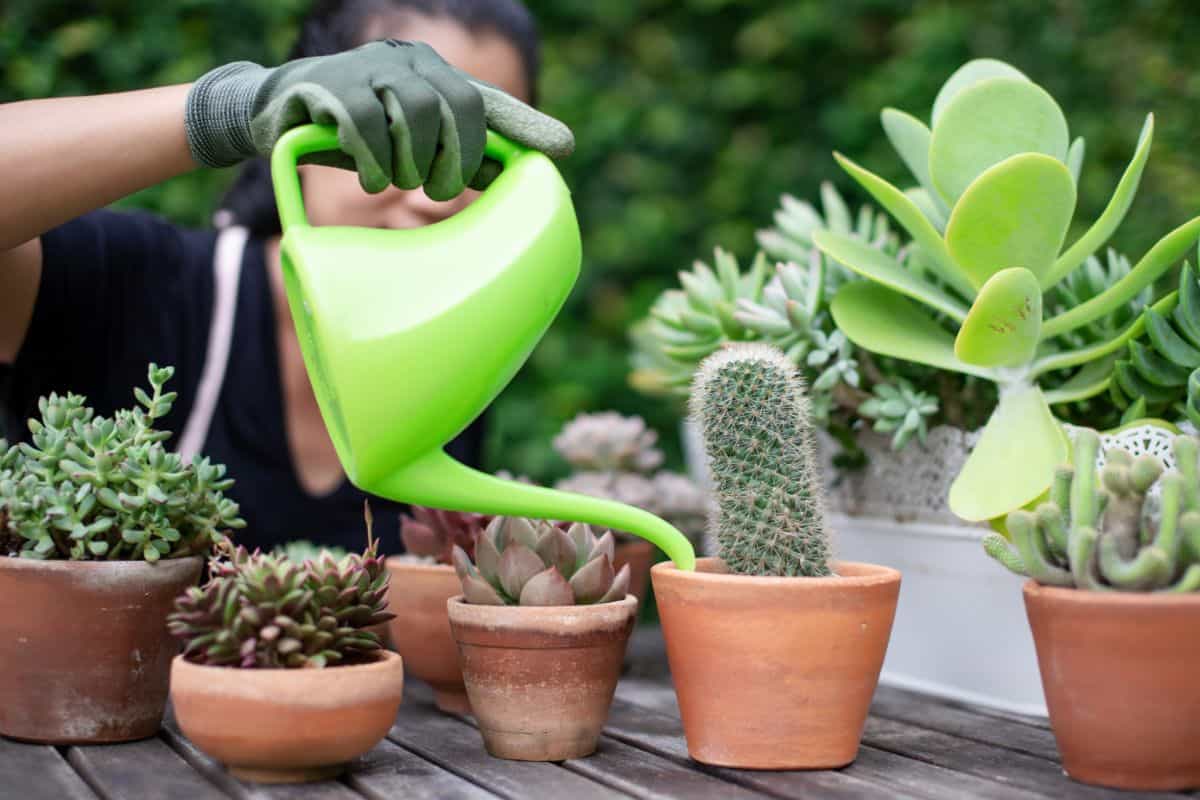
While containers with drainage holes are favored, that doesn't mean your succulents won't grow in pots without holes. Learn how to water them correctly.While it’s generally recommended to grow succulents and cacti in containers with drainage holes, that doesn’t mean your plants won’t grow in pots without holes. It just means you’re going to need to be much more careful about watering your succulents and monitoring the moisture levels of the soil.
Jump to:
The Importance of Drainage
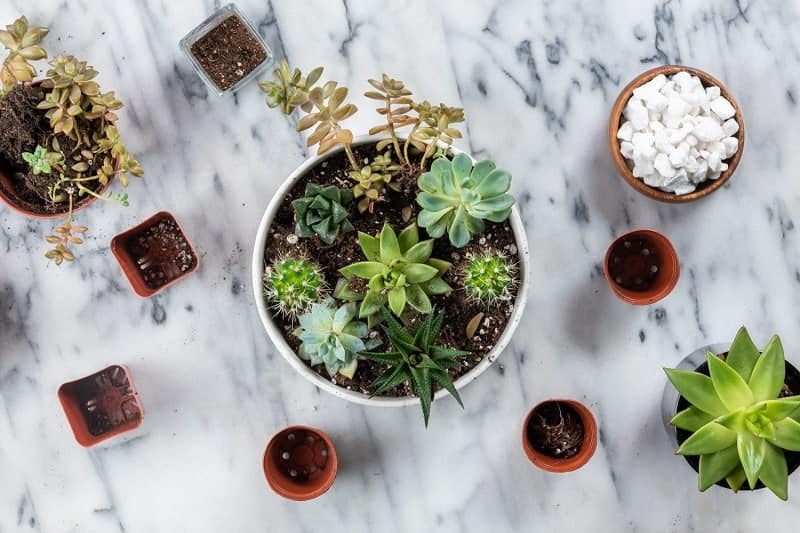
Remember, succulents are drought loving plants that store water in their thick leaves and stems. This allows them to go longer periods of time between watering. If succulents are allowed to sit in overly wet soil, they’re not going to be able to absorb that excess moisture and their roots will instead begin to rot.
One of the most unfortunate characteristics of root rot is that you probably won’t notice that your succulent’s roots are in poor health until it’s too late. The damage of root rot takes place below the surface of the soil where it’s difficult to detect unless you happen to be transplanting your succulent and spot the rot in its early stages.
Unfortunately, once your succulent roots have begun to rot, there’s no going back. Root rot is not a treatable problem. You can dry drying the roots out or trimming off the damaged roots, but your chances of success are quite low unless you happened to spot the problem early on.
If you do happen to realize that your plant’s roots are rotting and its begun to affect the plant’s overall health, you can try beheading your plant. Yes, this is the propagation and doesn’t really address the root problem, but it may be the only way to save your beloved succulent.
As you can see, root rot is a serious threat to succulents without proper drainage, which is why most gardeners recommend using only containers with drainage holes. However, if you insist on using that quirky container without a drainage hole, there are ways to water your plants and keep them healthy.
See Also: How to Drill Drainage Holes in Terracotta and Clay
How NOT to Prepare a Pot without Drainage Holes
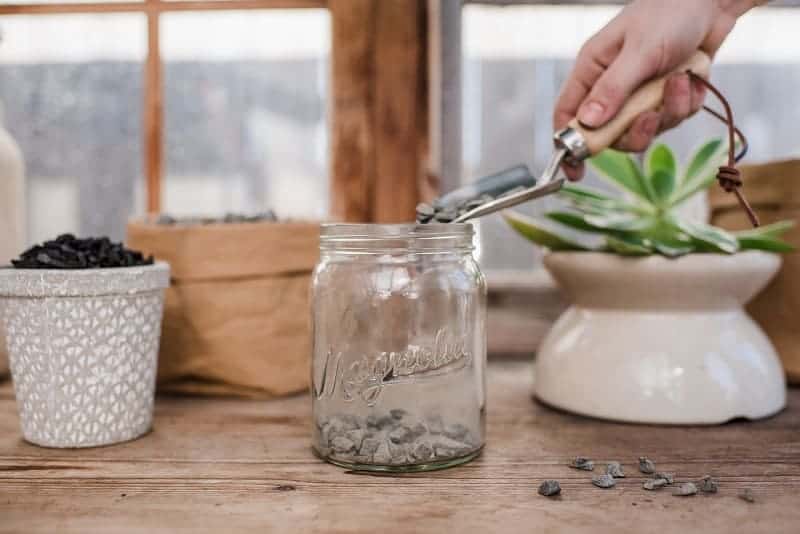
The world is full of adorable and unique containers that are just begging for a succulent to be planted in them, but unfortunately, many of them do not have drainage holes. While it would be much easier (and healthier) for your succulent to be planted in a different pot, if you properly prepare your container, your plant will have a much higher chance of survival.
Your initial instinct is probably going to be to fill the bottom of the pot with gravel to allow the water a place to drain out of the soil, right? Well, you’re going to need to fight the urge to do so, as a layer of gravel won’t actually improve your container’s drainage.
Common sense will tell you that gravity is going to pull the water out of the soil and down into the gravel. Unfortunately, in this case, common sense is overruled by science.
Water doesn’t particularly care about silly things like gravity and instead prefers interesting concepts such as cohesion and adhesion. If you don’t remember any of this from science class, it simply means that water likes to stick to both itself and other things. Think of a water droplet and how the water sticks together instead of flowing flat against a surface.
No products found.
Additionally, water is a big fan of capillary action, which is when it’s pulled up into a smaller space. Capillary action is the force that plants rely on to bring water from the soil up through the roots to the rest of the plant.
Since water doesn’t always obey the obvious laws of gravity, when you put gravel into a container, the water is going to prefer to stick to the smaller particles of soil, rather than drain down into the gravel. The gravel becomes an aquitard, which is a layer of material that cannot be penetrated by water.
The result is a perched water table. Instead of the bulk of the water sitting at the bottom of the pot, it instead rests just above the aquitard (gravel). This perched water table is going to be closer to your plant’s roots than it would be if you had just used soil without any gravel. A closer water table means your succulents are at a higher risk for root rot.
What Size Pot Should I Use?
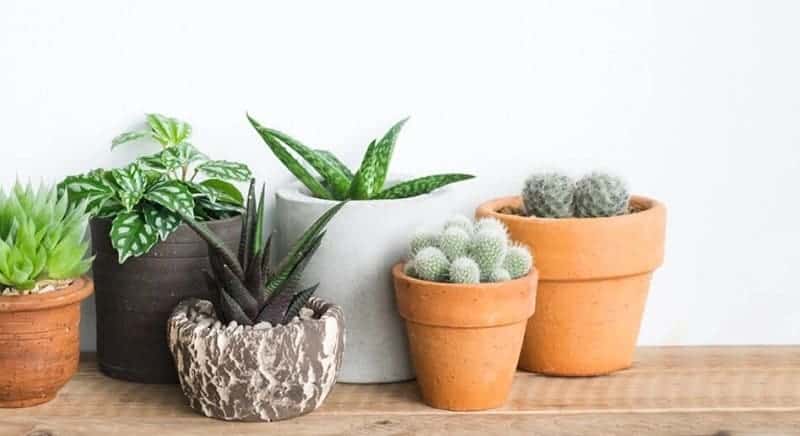
So, if you must use a container without a drainage hole, is it better to use a tall pot or a shallow pot? Again, the answer may not be what you expect. Remember, you want your succulents to be able to avoid your container’s water table.
If you use a short pot, you risk allowing your succulent’s roots to sit in the excess moisture that is sure to collect without a drainage hole. This is especially true if you made the mistake of putting a layer of gravel on the bottom of the pot.
With a tall container, on the other hand, the excess water will drain toward the bottom, out of reach of your succulent roots. Again, the water won’t have anywhere to go, since there’s no drainage hole, but at least it will drain far enough way to reduce the risk of root rot.
As far as the overall size of the pot goes, the smaller the better. Obviously, larger pots are going to retain more water than smaller ones. You may need to repot your plant once it outgrows its current container, but it’s better than risking your plant’s life with too much moisture. If you need help choosing the correct pot size for your succulent, read our guide here.
How to Prepare a Pot without a Drainage Hole
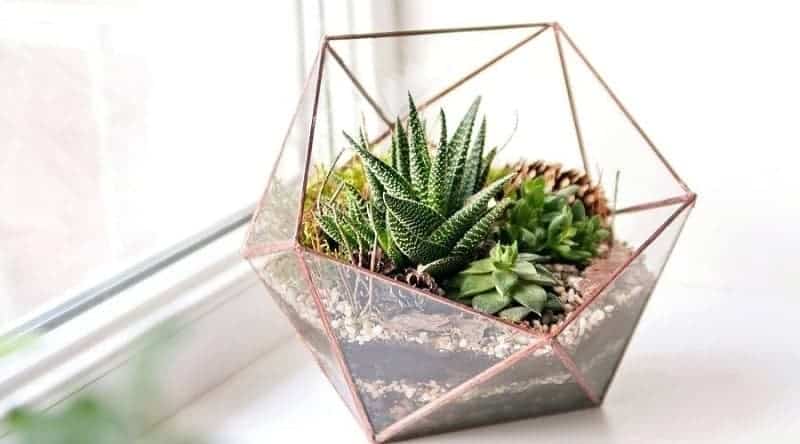
The first step in preparing your container is to choose a soil appropriate for succulents. This does not mean you’ll be able to buy any bag of soil from your local garden center. Succulents need drainage, so you’ll need to be able to provide your plants with a well-draining soil, even if you can’t give them a pot with drainage.
Your local nursery or favorite online retailer likely has soil that’s specially made for succulents. Instead of a large percentage of water-retaining materials like clay, soil for succulents contains larger particles that promote drainage. This can include sand, perlite, gravel, and even tree bark.
Succulent soils are also typically less dense than those used for vegetable or flower gardens. Not only do dense soils retain water, but they limit the airflow in the soil, which won’t be appreciated by your succulents and cacti.
Of course, you can also make your own succulent soil if you can’t find it in stores or are just feeling crafty. Once you’ve got the right kind of soil, you can fill your pot with it.
How to Use a Cachepot
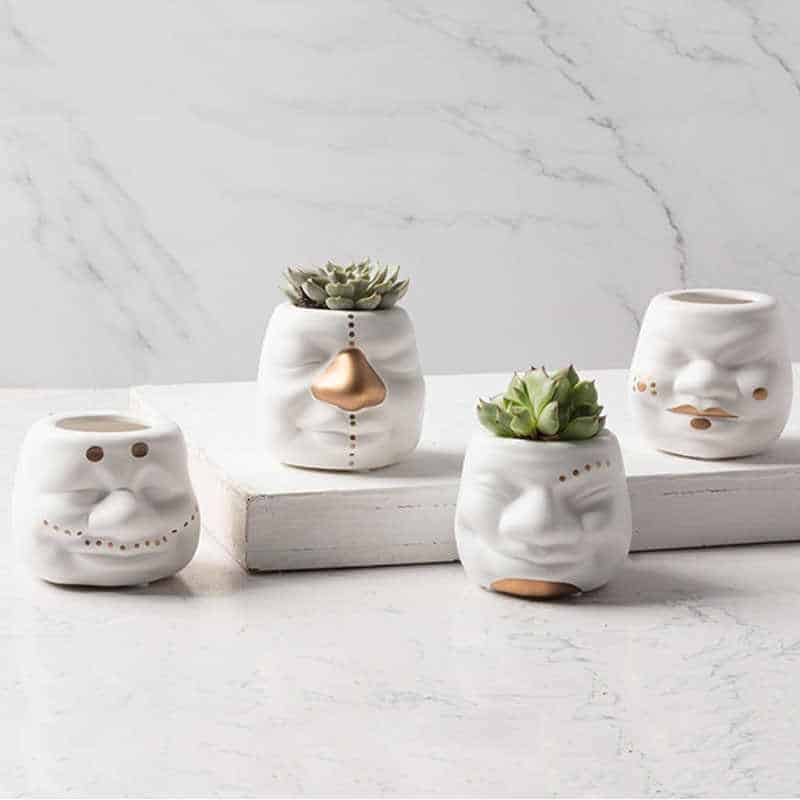
If you insist on using a container without a drainage hole, there are ways to get around the lack of drainage. One option is to use a cachepot. A cachepot is simply a smaller pot with a drainage hole planted inside the larger pot without a drainage hole.
Of course, this only works if your plant is able to be potted in a smaller size container. The cachepot works by creating a protective barrier around your plant to shield it from the excess moisture of the outer pot. The excess water can drain out of the cachepot into the larger container and away from your succulent roots.
When placing your cachepot into your larger container, you can actually disguise the cachepot by burying it just below the surface of the soil. No one even needs to know about your secret weapon against root rot.
Just make sure that your cachepot isn’t too close in size to the larger container. If they’re too close in size, there won’t be enough room in the outer pot for the excess water to drain out and you’re going to face the same problems as if you hadn’t used a cachepot at all.
Watering Succulents in Pots without Drainage Holes
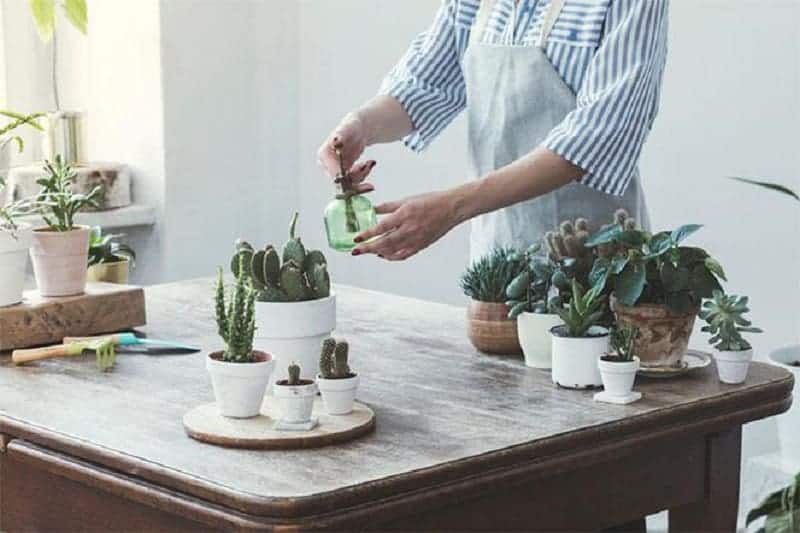
When you water succulents planted in pots WITH drainage, you usually give them a good drenching since the excess moisture is just going to drain away anyway. However, when you’re dealing with pots without appropriate drainage, you need to be a little more careful with the way you water your plants.
Instead of pouring a ton of water over your plants when they’re thirsty, you’ll need to give them a more measured amount of moisture. It’s generally recommended to give your plants an amount of water equal to about half the volume of soil in the container.
After watering, you can wait several minutes to allow the soil to absorb as much moisture as possible. If your plant and container are small enough, you can try dumping out the excess water. Of course, don’t try this with cactus or you’re going to end up with spikes in your hands!
To dump the water out of the pot, place your hand over the soil and around the stem of the succulent and gently tip the pot over until the excess water begins draining out. It can be useful to take note of how much water comes out, or even pour it into a cup to be measured, so you can adjust your water accordingly the next time.
Once you’ve removed the excess water, if you’re able to, you’ll need to monitor the soil’s moisture levels to see how long it takes for them to dry out. If you’re not a fan of sticking your finger into the soil to check for moisture, consider investing in a soil moisture meter.
Soil moisture meters are simple devices that do exactly what you might expect: they measure the moisture levels in the soil. The benefit of using a meter instead of your finger is that they can reach further into the soil. This is especially helpful if you’re using a tall container.
Many soil moisture meters also measure things like the pH level in the soil or the amount of light the plant is getting. If you’re interested in getting one, read our reviews of the best soil moisture meters for 2020.
Regardless of whether you’re using a meter or measuring moisture manually if you have any doubts about how moist the soil is, it’s best to wait a couple of days before watering. If your soil is dry, a few days isn’t enough to hurt, but if it’s still wet, the extra time will be enough to dry it out a bit before you add more water.
A note of caution: If you’re planning on keeping your succulents outdoors, a drainage hole is necessary! If your plants get rained on, it’s going to be far more water than your succulent can deal with and its roots will rot. If you want to use a container without a drainage hole, you must be willing to keep the plant indoors where you can control how much water it gets.
How Often to Water Succulents in Pots without Drainage
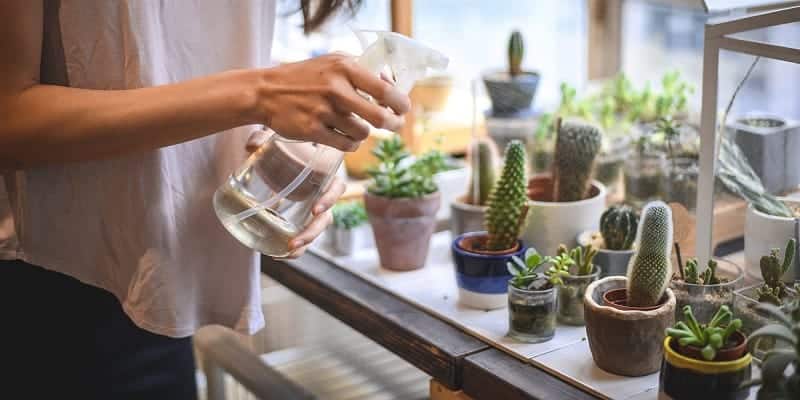
There really is no right answer as to how often you should be watering your succulents. It will depend on a few different factors. First, if you live in a humid climate, you’ll likely water your plants less frequently than someone who lives in a desert. The soil won’t dry out as fast in humid weather as it will in a dry area.
The temperature will also affect how quickly the water from your succulent soil evaporates. If the weather has been cool or mild, you’ll be able to go longer between watering. In the middle of summer, especially somewhere like the southwest United States, you’re going to need to water your plants much more frequently.
The type of pot you use will also affect how often you need to water your plants. If your container is made of a porous material, such as terra cotta, it’s going to absorb a bit of the excess water which will cause the soil to dry out quicker. Containers made of plastic, on the other hand, will take longer for the soil to dry out since the container itself won’t absorb any of the water.
If you’re worried that the soil isn’t drying out as quickly as you’d like, try placing your plant in a sunny window. Even placing your succulent under a grow light can provide enough warmth for the soil to dry out a bit faster.
You Might Also Like:

